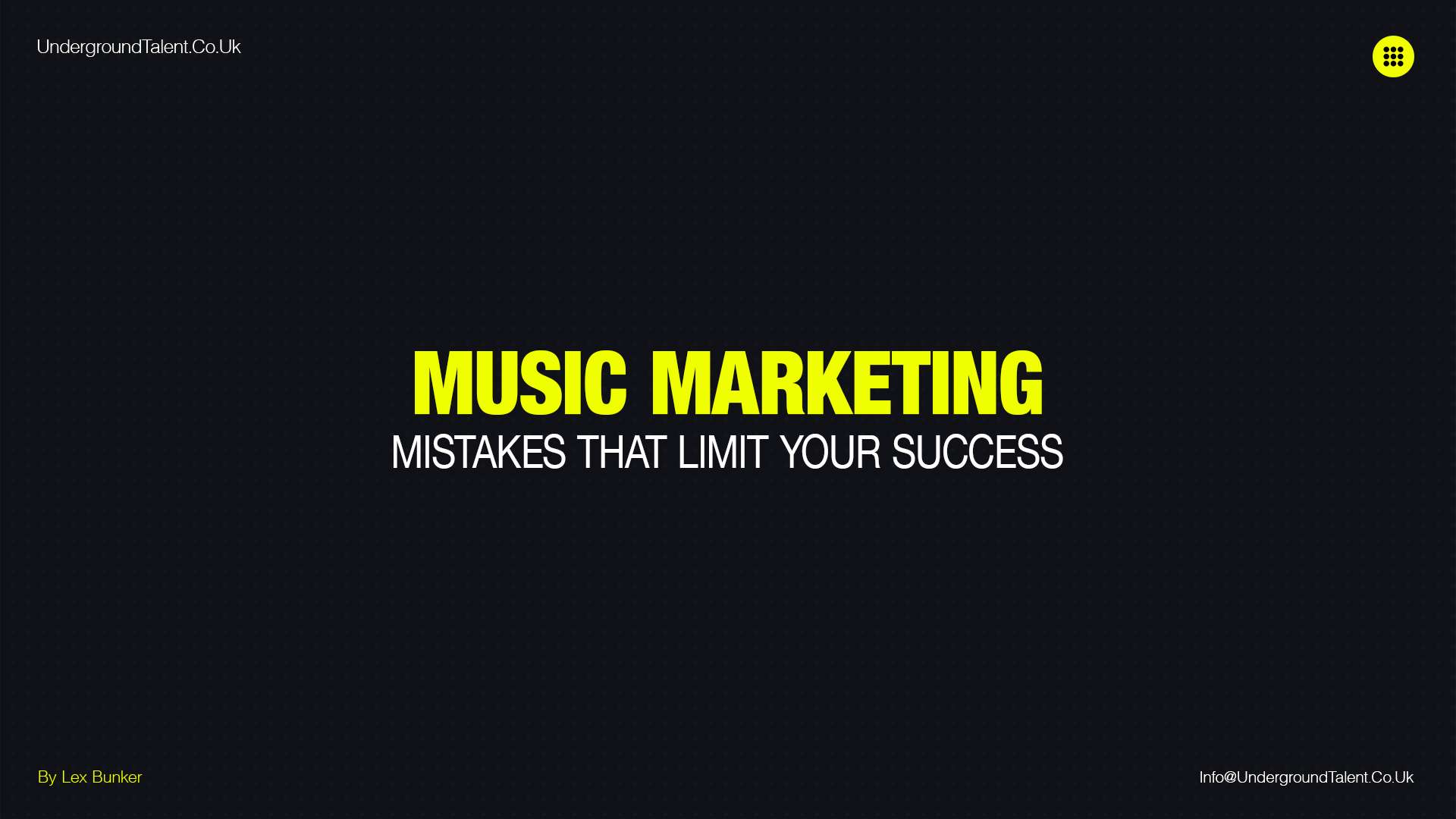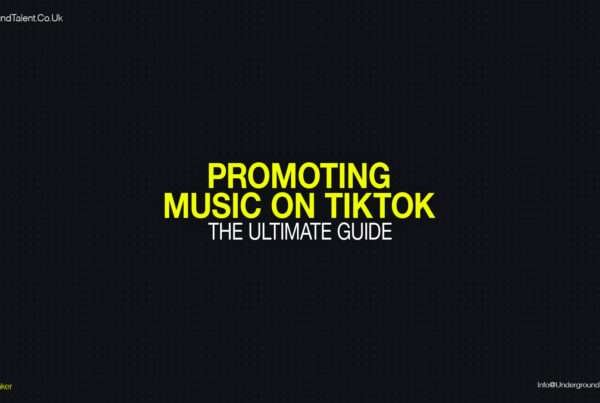Introduction: Why Marketing Matters for Musicians
Understanding Your Audience: The First Step to Effective Marketing
Understanding your audience is crucial for effective music marketing.
Knowing who your listeners are helps tailor your promotional efforts. Start by identifying key demographics: age, location, and musical preferences. Use tools like social media analytics and surveys to gather these insights.
These methods provide valuable data that can shape your marketing strategies.
For instance, analytics might reveal that most of your fans are from urban areas and enjoy pop music. With this information, you can focus your advertising efforts on platforms popular among this group.
Further, engaging directly with your audience through social media can provide immediate feedback and deepen fan relationships.
By aligning your marketing tactics with your audience’s preferences, you enhance your reach and impact, making your music promotion more effective and efficient.
List of the Music Marketing Mistakes That Limit Your Success

Image by Explorenation
Music Marketing Mistake #1: Assuming Quality Alone Will Sell Your Music
Assuming that quality alone will sell your music is a common marketing mistake many musicians make. Quality is critical, but without proper marketing, even the best tracks can remain unheard of.
For example, numerous indie artists have seen their careers transform after implementing targeted social media campaigns or partnering with influencers to gain visibility. These case studies show that strategic marketing can significantly boost an artist’s profile beyond what music quality alone might achieve.
Relying solely on the quality of your music neglects the importance of visibility and engagement in today’s digital age. It risks missing out on diverse audience segments that could be reached through effective marketing channels like YouTube, Spotify playlists, and Instagram.
This approach fails to consider how music consumption has evolved, with many listeners discovering new tracks through curated lists and recommendation algorithms rather than seeking out music independently.
By understanding that high-quality music needs the support of robust marketing to reach its potential audience, musicians can avoid this critical pitfall and increase their success.
Music Marketing Mistake #2: Ignoring Digital Marketing Strategies

Image by Campaign Creators
Ignoring digital marketing strategies is a significant oversight for any musician in the streaming era.
Establishing a digital presence is crucial as it opens up countless avenues for music distribution and fan engagement. Platforms like SoundCloud, Spotify, and YouTube are essential for reaching listeners where they are most active.
These platforms not only allow you to share your music but also enable you to interact directly with your audience, gather data on listening habits, and gain critical exposure.
To effectively leverage these platforms, artists should optimize their profiles and use data analytics to understand audience preferences. It is important to engage with listeners through comments and personalized content. Strategies such as regularly updating playlists, collaborating with other artists, and employing SEO tactics can greatly enhance visibility and attract new fans.
For a deeper dive into digital marketing strategies specifically tailored for electronic music, consider exploring our comprehensive guide: Digital Marketing For Electronic Music.
This resource provides detailed insights and practical tips to maximize your digital presence effectively.
“What separates good content from great content is a willingness to take risks and push the envelope.”
— Brian Halligan, CEO & Co-founder, HubSpot
Music Marketing Mistake #3: Inconsistent Branding
The Impact of Branding on Music Marketing
Branding is vital in music marketing as it defines your image and how audiences perceive you. A strong, consistent brand helps fans easily recognize and connect with your music across various platforms. It sets the tone for all communications and marketing efforts, aligning your visuals, style, and messages to create a memorable experience. This consistency builds trust and loyalty, which are crucial for long-term success in a crowded market.
Strategies for Developing a Cohesive Brand Identity
To develop a cohesive brand identity, consider these steps:
- Define Your Core Values: Determine what sets you apart and how you want to be perceived.
- Consistent Visual Elements: Use a uniform colour scheme, logo, and font style across all platforms.
- Maintain a Unified Voice: Ensure that your communication, from social media to customer service, reflects your brand personality.
- Regular Audits: Periodically review your branding to keep it fresh and relevant.
- Leverage Multi-channel Branding: Apply your branding across all marketing channels, including your website, social media, and merchandise.
How to Build A Successful Personal Brand?
Music Marketing Mistake #4: Underutilizing Social Media
Utilizing Platforms for Engagement Versus Mere Broadcasting
Social media is not just a broadcasting tool; it’s a platform for interaction.
Artists should use these platforms to engage directly with their audience, not just to announce new releases. Engaging content that invites responses—such as polls, questions, or interactive stories—helps build a community around your music.
This interaction boosts your visibility in social media algorithms, increasing your content’s reach and impact. Dive deeper in social media marketing with our article ‘Social Media Marketing Campaign for Electronic Music Artists‘.
Case Studies of Successful Social Media Campaigns by Independent Artists
The campaign for Wojtek’s debut album “Atmosphere” is a prime example of how independent artists can use social media effectively. To create a carbon-neutral album, Wojtek employed several innovative strategies:
- Objective: Launch a carbon-neutral music album.
- Strategy:
- Emissions Tracking: Monitored all carbon emissions from the album’s production.
- Renewable Energy: Used renewable energy sources and purchased Renewable Energy Certificates.
- Digital Tools: Developed a CO2 tracker for his website to show real-time emissions.
- Distribution and Promotion:
- Digital Distribution: Focused on digital formats to minimize physical production impacts.
- Social Media Engagement: Highlighted the eco-friendly production process to engage with the audience.
- Outcomes:
- Media Attention: Garnered coverage for its sustainability efforts.
- Social Media Growth: Significantly increased his following and engagement on platforms like Spotify.
- Playlist Features: Featured in playlists discussing sustainability in music.
This approach not only enhanced Wojtek’s brand visibility but also positioned him as a leader in sustainable music production. For more details on Wojtek’s strategies and results, visit their full case study here.
Music Marketing Mistake #5: Neglecting Live Performances
How Live Shows Enhance Marketing Efforts
Live performances are pivotal for musicians looking to strengthen their market presence.
These events do more than showcase your music; they create a direct connection with your audience.
By performing live, you engage fans deeply, turning casual listeners into loyal supporters. This interaction boosts your visibility and helps cultivate a dedicated fan base, which is crucial for sustainable success.
Additionally, live shows provide content for social media, from behind-the-scenes footage to live clips, keeping your online presence vibrant and engaging.
Creating Memorable Experiences to Amplify Your Brand
To truly capitalize on live performances, focus on creating unforgettable experiences for your audience.
This involves more than just playing music; it includes everything from the venue atmosphere and visual effects to audience interaction. Tailoring each show to reflect your brand identity can make your performances stand out as events that people talk about and share.
Effective strategies include unique set designs, interactive elements like live polls or VR experiences, and merchandise that resonates with your brand.
These efforts ensure that every live show not only entertains but also significantly amplifies your brand’s reach and impact.
Music Marketing Mistake #6: Overlooking Email Marketing
Building a Sustainable Fanbase with Email
Email marketing remains a powerful tool for building a sustainable fanbase, often overlooked by emerging artists.
Unlike transient social media posts, emails provide a direct and personal line of communication with your audience. This method allows you to cultivate a long-term relationship with your fans by delivering tailored content that resonates on a personal level.
Regular updates about new releases, tours, and exclusive content can transform casual listeners into dedicated fans.
Implementing a well-managed email list also gives you control over your messages and ensures that your communications are not lost in the noise of social media.
Tips for Effective Email Campaigns That Keep Fans Engaged
To maximize the impact of your email marketing efforts, consider these tips:
- Personalize Your Emails: Use fans’ names and provide content that aligns with their preferences and previous interactions.
- Segment Your List: Create different lists for different types of fans. For example, those who frequent shows versus those who purchase merchandise.
- Use Engaging Subject Lines: Craft subject lines that entice readers to open emails without sounding spammy.
- Include Calls to Action: Each email should include a clear call to action, such as listening to a new track, purchasing tickets, or following your social media.
- Optimize Send Times: Experiment with different sending times to find when your fans are most likely to engage with your content.
- Measure Performance: Track open rates, click rates, and conversions to refine strategies and improve future campaigns.
Learn more about Email Marketing For Electronic Music Artists here.
Music Marketing Mistake #7: Skimping on Professional Visual Content

Image by Nikita Kachanovsky
The Role of Visuals in Music Promotion
Visual content is essential in capturing and maintaining the attention of your audience in the digital age. High-quality visuals—whether album covers, music videos, promotional graphics, or concert photos—can significantly amplify the reach and impact of your music.
These elements not only enhance how fans perceive your brand but also play a critical role in making your music stand out on crowded platforms like Spotify, YouTube, and Instagram.
Engaging visuals are often shared, leading to increased exposure and helping to attract new listeners through visual appeal alone.
Partnering with Professionals to Enhance Your Visual Strategy
To ensure your visuals make the strongest impact:
- Hire Professional Designers and Photographers: These experts can bring your musical vision to life visually, ensuring consistency and quality that reflect your brand.
- Invest in Quality Music Videos: Work with skilled videographers to create compelling narratives that resonate with your audience and highlight your music.
- Utilize Graphic Designers for Marketing Materials: Professional designers can produce eye-catching concert posters, online ads, and merchandise designs that capture potential fans’ interest.
- Collaborate with Visual Artists: Consider collaborations with visual artists for unique album art or interactive live show elements, which can differentiate your brand in a saturated market.
Music Marketing Mistake #8: Missing Collaborative Opportunities
Harnessing Collaborations for Wider Reach
Collaborations are a powerful tool for expanding your reach within the music industry.
Working with other artists not only exposes you to their audience but also brings fresh perspectives and creativity to your projects. Collaborative tracks often gain more traction on streaming platforms and social media, as fans of each artist come together, increasing overall engagement and listener numbers.
Additionally, collaborations can extend beyond just other musicians; partnerships with brands, content creators, and even venues can amplify your visibility and credibility in the market.
Finding and Approaching Potential Collaborators
To effectively find and engage potential collaborators:
- Identify Alignment in Musical Style and Audience: Look for artists whose musical style complements yours and whose fans might appreciate your music.
- Leverage Existing Networks: Utilize your personal and professional networks to get introductions to artists and industry figures.
- Engage on Social Media: Follow, interact with, and get to know potential collaborators on platforms like Instagram and Twitter.
- Offer Value: Be clear about what you can bring to the collaboration. A mutual benefit is crucial for a successful partnership.
- Use Professional Platforms: Consider platforms like SoundBetter or Bandcamp for finding and connecting with potential collaborators.
- Draft Clear Agreements: Ensure both parties are clear on the terms of the collaboration, including responsibilities, rights, and financials, to avoid conflicts.
Music Marketing Mistake #9: Ineffective Release Strategies

Timing and Planning for Music Releases
Proper timing and strategic planning are crucial for maximizing the impact of your music releases. Releasing music without considering the best timing can result in missed opportunities for media coverage, fan engagement, and promotional activities. To optimize release timing:
- Understand Industry Cycles: Avoid releasing music during overcrowded periods like major holidays or when major artists drop new music.
- Plan Around Significant Dates: Align releases with relevant dates such as anniversaries, seasonal events, or personal milestones to create more impactful narratives.
- Pre-release Campaigns: Build anticipation with pre-release singles, teasers, and social media countdowns to gather interest.
Utilizing Singles, EPs, and Albums Effectively in Your Marketing Plan
The structure of your releases—whether singles, EPs, or full albums—plays a significant role in your overall marketing strategy.
- Singles: Ideal for keeping a steady stream of content and maintaining visibility between larger projects. Singles can test new styles or concepts before committing to a full album.
- EPs: Serve as a great middle ground to explore themes or concepts more deeply than a single without the full commitment of an album. EPs can target niche audiences effectively.
- Albums: Best for established artists with a devoted fan base, or when you have a cohesive story or theme that requires more space to unfold. Albums create significant buzz and can be used to anchor extensive touring and merchandise sales.
Music Marketing Mistake #10: Lack of a Structured Marketing Plan
Importance of Having a Detailed Marketing Plan
A detailed marketing plan is essential for any musician looking to make a significant impact in the industry.
Without a structured approach, efforts can become disjointed and ineffective, leading to wasted resources and missed opportunities. A well-crafted plan ensures that all marketing activities are aligned with your artistic goals and target audience, enabling systematic tracking and optimization of results.
It also provides a roadmap for achieving specific career milestones and helps maintain focus on long-term objectives amidst the daily demands of the music industry.
Elements of a Successful Music Marketing Strategy
A successful music marketing strategy includes several key components:
- Clear Objectives: Define what you want to achieve with each release, whether it’s increasing fan engagement, reaching new demographic groups, or boosting streaming numbers.
- Target Audience Analysis: Know who your music resonates with and tailor your marketing messages accordingly.
- Budget Planning: Allocate resources efficiently across different channels to maximize impact without overspending.
- Multi-Channel Approach: Utilize a combination of digital and traditional marketing channels such as social media, email marketing, PR, and live events.
- Content Calendar: Schedule releases and promotional activities to maintain a consistent presence in the minds of your audience.
- Engagement Tactics: Plan for interactive content that encourages fan participation and builds community around your music.
- Analytics and Adjustments: Regularly review performance metrics and be prepared to adjust your strategy based on what the data shows.
Music Marketing Mistake #11: Disregarding Analytics and Feedback
Using Analytics to Refine Marketing Tactics
Analytics are crucial for understanding the effectiveness of your marketing strategies.
By tracking data such as engagement rates, click-through rates, and demographic information, you can identify what works and what doesn’t. This information allows you to refine your tactics, optimizing your campaigns for better results.
For instance, you might adjust your ad spend based on which platforms yield the highest conversion rates or tweak your content strategy to better resonate with your audience’s preferences.
The Importance of Feedback from Fans and How to Use It for Improvement
Feedback from fans is an invaluable resource for any artist.
It provides direct insight into how your music and brand are perceived and what your audience truly cares about. Engaging with fans through surveys, social media interactions, and live shows can provide critical feedback that informs future creative decisions and marketing strategies.
Use this feedback to adapt your offerings—whether it’s adjusting your setlist for live performances based on fan favourites or evolving your musical style to align with listener preferences.
Music Marketing Mistake #12: Mismanaging Your Budget
Allocating Your Marketing Budget Effectively
Effective budget management is key to successful music marketing.
It’s important to allocate funds across various channels to ensure a balanced approach that maximizes reach and impact. Determine which aspects of your marketing strategy require the most investment (e.g., digital ads, music videos, PR services) and allocate your budget accordingly.
Also, consider investing in long-term assets like a professional website or quality visuals that provide ongoing value.
Common Financial Mistakes in Music Marketing
Common financial mistakes in music marketing include overspending on low-return tactics, neglecting to budget for unexpected expenses, and failing to measure the ROI of marketing campaigns.
To avoid these pitfalls, it’s crucial to set a clear budget with allocated contingencies and track all expenses meticulously. Regularly reviewing financial performance against set goals will help you stay on track and make informed adjustments to your spending, ensuring every dollar contributes to your career growth.
Conclusion: Integrating Marketing into Your Music Career
Integrating a comprehensive marketing strategy into your music career is not just advantageous—it’s essential. Avoiding the common marketing mistakes outlined earlier is crucial for any artist aiming to thrive in the competitive music industry. Each mistake, from neglecting digital marketing to mismanaging a budget, can significantly hinder your ability to reach and engage your audience effectively. By understanding and addressing these pitfalls, you can craft a marketing plan that not only avoids these errors but also capitalizes on your unique strengths as an artist.
Success in the music industry requires more than just musical talent; it demands proactive and informed marketing efforts. Artists must be adept at using digital tools, understanding their audience, leveraging analytics for informed decisions, and managing their financial resources wisely. These skills allow you to maximize your visibility, engage with fans more deeply, and build a sustainable career.
Therefore, embrace a holistic approach to your marketing strategies—plan meticulously, execute diligently, and adjust frequently based on data-driven insights. By doing so, you will significantly enhance your potential for success, setting a foundation for a robust and enduring presence in the music world.
Additional Resources
- How to Start a Record Label? The Ultimate Techno Guide
- DJ: How to Build a Successful Career | 10 Tips & Strategies
- Techno Events: How to Plan & Organize the Perfect Techno Party
- Making Money With Music Production | A Comprehensive Guide
- Tech Rider: What It Is & Why Professional Artists Need One
- Adorn ‘AI-5’ EP – A Bold Fusion of History and Hard Techno
Producing Techno? Get Your Free Sample Packs.
Dive into electronic music production with our newly released “Free Techno Tools V1” and “Free Techno Tools V2” sample packs. These packs are full of high-quality sounds that will add a professional touch to your tracks. If you’re looking to expand your sound library, these free sample packs are perfect for every techno fanatic. Click on the links below to access these fantastic resources and elevate your production game today!
More Techno? Connect With Us.
Join our vibrant community for more wisdom and updates:
And Always Remember…
Have Fun & Be Creative!





